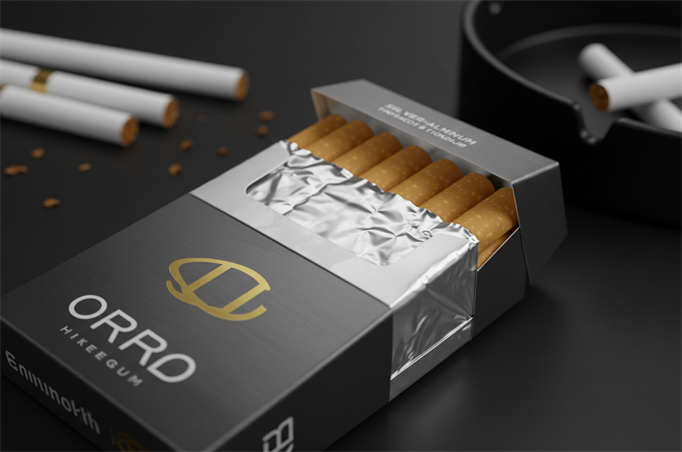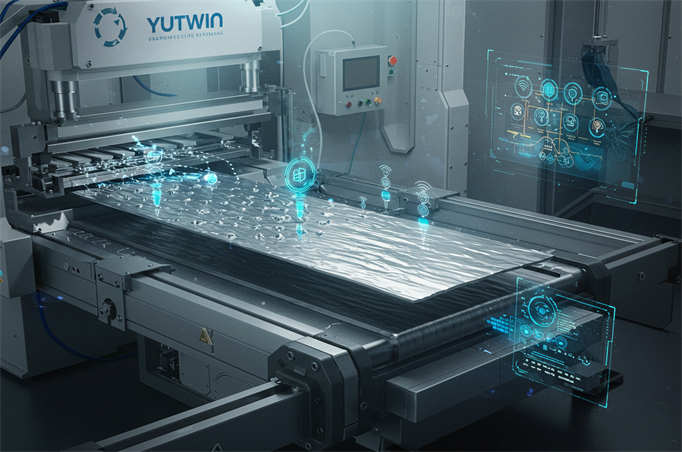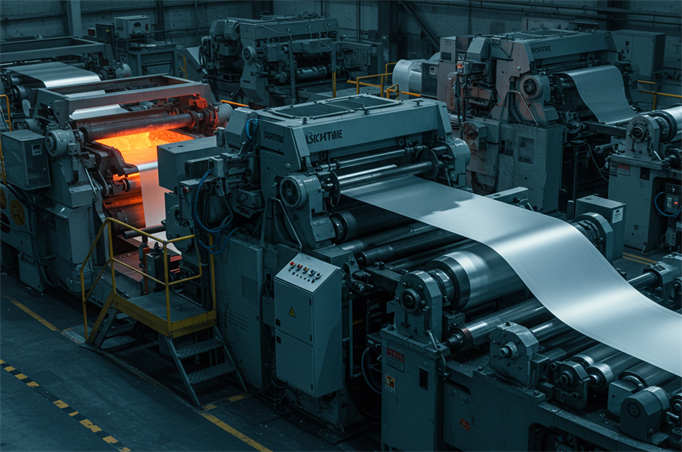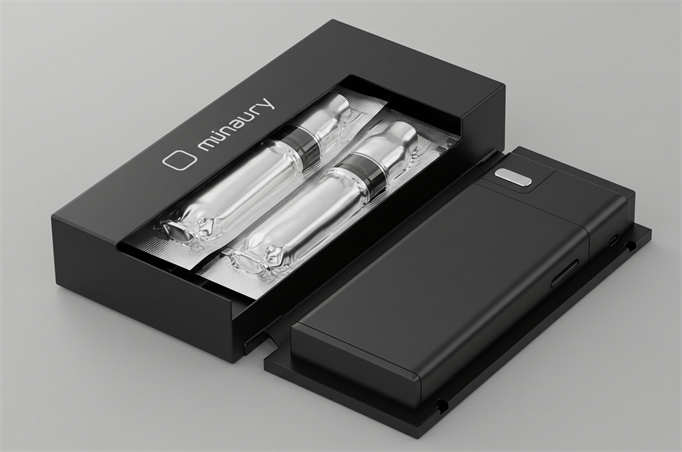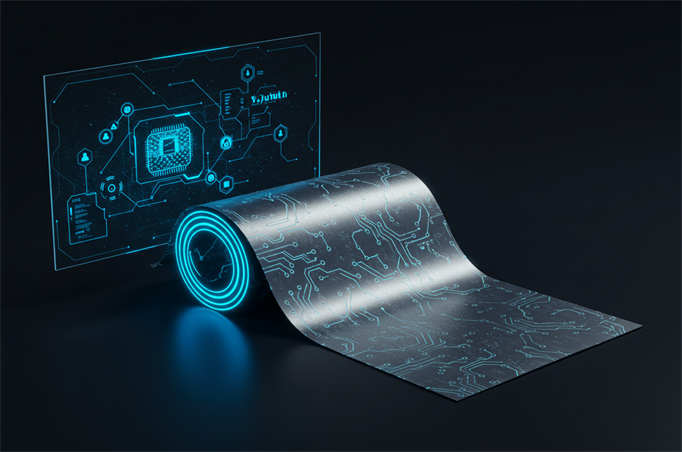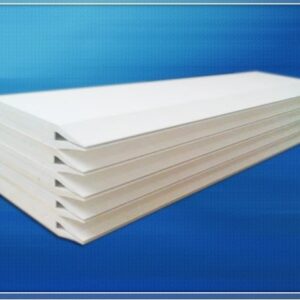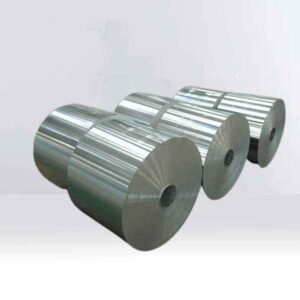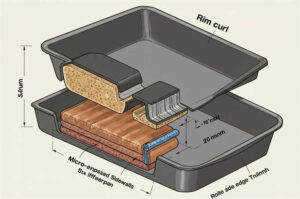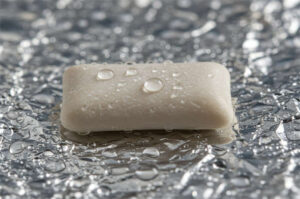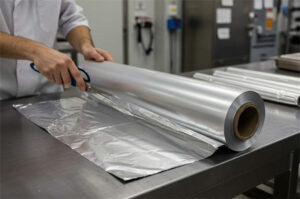Yutwin Nouveaux matériaux stands at the forefront of innovation in the ever-evolving packaging and material industry landscape, particularly in silver-aluminum cigarette foil paper. Our company is deeply committed to exploring and advancing the potential of this remarkable material, leveraging its unique properties to meet the diverse needs of various sectors.
Silver aluminum cigarette foil paper, a product with a rich history and a promising future, has long been an essential component in the tobacco packaging industry. Its high barrier properties, such as moisture-proof, oxygen-isolating, and light-shielding capabilities, make it an ideal choice for protecting tobacco products from environmental factors and maintaining their quality and flavor. Moreover, its ability to withstand high temperatures and excellent ductility provide reliable support for the packaging process.
But our vision for silver-alcohol cigarette foil paper extends far beyond traditional tobacco packaging. We recognize its vast potential in other industries, such as food packaging, where it can be used to preserve the freshness of chocolates and candies, and in industrial applications, like cable shielding and capacitor materials. This versatility is a testament to the remarkable characteristics of the material and the endless possibilities it offers.
At Yutwin New Materials, we are not only focused on the current applications of silver-aluminum cigarette foil paper but also on driving its future development. We are actively involved in research and development, constantly seeking ways to improve its performance, develop new production processes, and explore more sustainable and environmentally friendly solutions. In an era where environmental protection is a global concern, we are determined to contribute by promoting recyclable and biodegradable materials.
As we embark on this journey, we invite you to explore the world of silver-alcohol cigarette foil paper. In this blog, we will delve into its definition, properties, applications, production processes, market trends, and much more. Stay tuned to discover this material’s amazing potential and how Yutwin New Materials is shaping its future.
1. Definition and Material Characteristics
Basic Composition
Tobacco foil paper, typically used for packaging, consists of aluminum foil. It is processed from aluminum material and has excellent barrier properties, such as moisture resistance, oxygen isolation, and light shielding. It also boasts high-temperature resistance (melting point above 660°C) and ductility. Its surface may be treated with aluminum coating, wire drawing, or embossing to enhance appearance and functionality.
Alloy and Specifications
Common aluminum alloy grades for tobacco foil include A1235, A8011, and A8079. These grades have thicknesses ranging from 0.006 to 0.02 millimeters and widths reaching up to 1000 mm, meeting the precise requirements for cigarette packaging.
2. Key Application Areas
Tobacco Packaging
- Primarily used as an inner lining for cigarettes, protecting tobacco from moisture, oxidation, and odors, thus extending shelf life.
- Some foils undergo embossing (e.g., gold card foil, soft packaging foil) to enhance anti-counterfeit features and aesthetics.
Expansion to Other Industries
- Emballage alimentaire: Used in chocolates and candies for moisture and heat protection.
- Industrial Applications: Used for cable shielding and capacitor materials.
3. Production Processes and Technological Trends
Mainstream Processes
- Hot Rolling is a traditional process involving melting, milling, and homogenizing. It results in stable product quality but at a higher cost.
- Casting and Rolling: This shorter process flow directly casts and rolls molten aluminum, which is more cost-effective but requires optimization for internal uniformity.
Innovation Directions
- Eco-friendly Materials: Development of biodegradable aluminum foils in response to the green packaging trend.
- Brilliant Production: Implementing automated equipment enhances efficiency and precision, with technologies such as dual-zero foil reaching thicknesses as low as 0.006 mm.
4. Market Landscape and Forecast
Market Size
- China’s aluminum foil roll market est attendue to grow at a compound annual growth rate (CAGR) of 5%–8% from 2025 to 2030, driven by the demand for new tobacco products such as e-cigarettes.
- In 2024, the wholesale price of aluminum foil will be approximately 3.7 yuan/kg, with food-grade products comprising the major share.
Competitive Landscape
- The industry is concentrated in manufacturing hubs like Jiangsu and Zhejiang provinces, where companies focus on technological upgrades and supply chain integration.
5. Purchasing and Usage Tips
Purchasing Points
- Food Safety Certification: Choose products that meet the GB/T 3189-2003 standard and pay attention to aluminum powder residue reports.
- Functional Needs: For high-temperature cooking, opt for thicker foils (e.g., 20 microns), while decorative purposes may require gold/silver-coated foils.
Usage Scenarios
- Baking/Grilling: Wrapping ingredients to ensure even heating and prevent burning.
- Industrial Protection: Feuille d'aluminium est utilisé in cables for electromagnetic shielding and corrosion prevention.
6. The Role of Tobacco Foil Paper in Cigarette Packs
Tobacco foil paper (often referred to as the foil inside cigarette packs) serves the following functions:
Core Functions and Effects
- Moisture and Oxidation Protection: Aluminum foil has excellent barrier properties, preventing cigarettes from becoming damp or oxidized, thus preserving the tobacco’s dryness and flavor.
- Maintaining Tobacco Integrity: The foil’s flexibility and ductility absorb external forces, preventing cigarettes from being crushed or deformed during transportation or storage.
- Odor and Contaminant Barrier: The foil shields the tobacco from absorbing external odors (such as from clothes or food) and prevents the tobacco smell from contaminating other items.
- Shelf Life Extension: Aluminum foil extends the shelf life of cigarettes by blocking environmental factors, particularly in hot and humid areas.
Additional Value and Design Considerations
- Enhancing Product Feel: The metallic sheen of aluminum foil adds a premium, refined look to cigarette packs. It is often used for limited edition or commemorative packaging to increase appeal.
- Anti-counterfeit and Brand Recognition: Special aluminum foil treatments, such as embossing and silver plating, enhance anti-counterfeit features (e.g., gold card foil, brushed films).
- Environmental Sustainability and Recycling Value: Aluminum foil is 100% recyclable and can be used to make beverage cans and aluminum materials, reducing resource consumption and carbon emissions.
7. Other Practical Uses (Often Overlooked by Users)
Everyday Tools
Used aluminum foil can be repurposed to sharpen scissors, remove metal rust, enhance Wi-Fi signal reflection, or temporarily repair small electrical devices.
Creative Craft Materials
Its metallic texture and pliability make it suitable for creating collages, temporary wallets, or decorative items.
Tobacco foil paper plays a dual role in cigarette packs as a protective barrier and a symbol of quality, going beyond basic packaging needs. With increasing environmental awareness, the future will see biodegradable foils and recycling processes enhance sustainability.
8. Tobacco Foil Paper in E-Cigarettes
Key Applications
- E-Cigarette Battery and Cartridge Packaging: Due to its excellent thermal conductivity, moisture resistance, and electromagnetic shielding, tobacco foil paper is used in packaging e-cigarette batteries and cartridges. For instance, some e-cigarette brands use ultra-thin aluminum foil (such as domestic standards of 1070 or 1100) as a barrier material for e-liquid storage to prevent leakage and oxidation. Additionally, aluminum foil, when combined with plastic, enhances the sealing and durability of the cartridges.
- Heating Elements and Circuit Substrates: Aluminum foil’s ductility makes it suitable for manufacturing e-cigarette heating elements. For example, aluminum foil membranes can be rolled to form the base for atomizers, working in conjunction with ceramic cores to provide uniform heating. Moreover, aluminum foil is used for electromagnetic shielding to reduce interference from electronic components.
Material Advantages
- High Precision and Lightweight: Aluminum foil used in e-cigarettes typically has thicknesses ranging from 0.006 to 0.02 mm, with widths up to 1000 mm, meeting the miniaturization requirements. For example, brands like RELX use aluminum alloys (such as 8011 or 8079) to create lightweight casings, balancing strength with portability.
- Safety and Environmental Impact: Food-grade aluminum foil (complying with GB/T 3189 standards) is non-toxic and odorless, suitable for direct contact with e-liquids. Some companies are developing recyclable aluminum foil materials to align with the e-cigarette industry’s green packaging trends.
Innovations dans les processus de production
- Ultra-thin Rolling Technology: Equipment like the Zhuoshen foil mill achieves precise control over foil thickness, ensuring an error margin of just ±0.001 mm, critical for the accurate assembly of e-cigarette components.
- Composite Process Upgrades: When aluminum foil is combined with high polymer materials (e.g., PET), hot sealing coating technology improves the bond strength, enhancing the cartridge’s ability to withstand pressure (up to 10 kg/cm²).
Market Drivers and Challenges
- Rising Demand: The Chinese e-cigarette market surpassed 150 billion yuan in 2024, driving a 12% %- 15% annual growth in tobacco foil paper demand. High-end products (e.g., silver-plated aluminum foil) are seeing a significant increase in anti-counterfeit and decorative applications.
- Goulets d'étranglement technologiques: The miniaturization of e-cigarettes demands high-performing aluminum foil, but ultra-thin foils below 0.006 mm are still primarily imported, making up 18% of the material cost of e-cigarette cartridges.
Future Development Trends
- Functional Coating Development: Research is underway to develop antibacterial coatings (e.g., silver ion coatings) on aluminum foil to extend cartridge shelf life. Additionally, exploring graphene-composite aluminum foil could boost thermal conductivity.
- Smart Production Integration: Digital twin technology is optimizing rolling parameters, and AI-based quality inspection systems are expected to reduce defect rates from 0.5% to below 0.1%.
9. Environmental Progress in Tobacco Foil Paper
Material Innovation and Biodegradable Technologies
- Recyclable Aluminum: Aluminum-based eco-friendly materials are produced via aluminum recycling techniques. For example, the Yongzhou Circular Economy Industrial Park in Hunan integrates waste aluminum recycling with production, reducing primary aluminum consumption. This process produces 95% fewer carbon emissions than traditional electrolytic aluminum.
- Biobased Coating Development: Some companies are exploring biodegradable coatings for aluminum foil, replacing traditional plastic composites with biobased materials like corn starch and PLA (polylactic acid), reducing environmental pollution. For example, food-grade tobacco foil uses water-based, eco-friendly coatings for a non-toxic, harmless result.
Green Production Process Breakthroughs
- Short-Process Casting: Compared to traditional hot rolling, casting directly produces aluminum foil from molten aluminum, reducing energy consumption by 25% to 40% and lowering wastewater and gas emissions. A particular aluminum foil company in Yunnan reduced total energy consumption to 1.2 tons of standard coal per ton of aluminum.
- Clean Energy Substitution: Smart production lines in Jiangsu and Zhejiang are incorporating solar power to cover 30% of their energy needs and secondary steam utilization to reduce reliance on fossil fuels.
Recycling System and Circular Economy
- Closed-Loop Recycling Network: Major enterprises, such as China Aluminum, have established recycling systems for tobacco foil paper, increasing recycling rates to over 85% and achieving a purity of 99.7% in recycled aluminum. For example, aluminum foil used in e-cigarettes has seen material costs drop by 18% due to closed-loop recycling.
- Resource Utilization of Waste Foil: Waste aluminum foil is processed into aluminum powder or used in manufacturing fire-resistant materials and cable shielding layers. For example, aluminum-based additives for flame retardant production have already been industrialized.
Policy Drivers and Standards Upgrades
- Environmental Regulations: The “Aluminum Industry Standards” require aluminum foil companies to achieve an energy consumption rate of ≤300 kgce/t, prompting enterprises to phase out outdated production capacities. In 2024, environmental improvement investments in the industry increased by 22% year-on-year.
- Green Certification Systems: Food-grade aluminum foil must meet the GB/T 3189-2003 standard, and some companies have obtained international certifications, such as FDA and REACH. The proportion of eco-friendly aluminum foil exported to the EU market has risen to 35%.
Challenges and Future Trends
- Technological Barriers: Ultra-thin biodegradable aluminum foil (thickness < 0.006 mm) still depends on imports. Domestic materials face challenges with flexibility and barrier properties, with R&D costs accounting for 20% of the total.
- Development Trend Predictions:
- Composite Functional Materials: Research into graphene-reinforced aluminum foil could enhance strength and reduce thickness.
- Lifecycle Management: Blockchain technology will track the entire lifecycle of aluminum foil from production to recycling, enhancing transparency.
- Zero-Waste Goals: The industry plans to achieve 100% recycling of production waste by 2030.
Tobacco foil paper’s progress toward environmental sustainability is shifting from simple material alternatives to a complete industry-wide green transformation. The future will require breakthroughs in ultra-thin biodegradable technologies while strengthening policy and market collaboration to maximize its value in the circular economy.
As we reach the end of this exploration into the world of silver-alcohol cigarette foil paper, Yutwin New Materials is filled with pride and excitement. Throughout this journey, we have witnessed the remarkable evolution of this material, from its traditional role in tobacco packaging to its expanding applications in various industries.
Our company has actively participated in this evolution, driving innovation and pushing the boundaries of what silver-aluminum cigarette foil paper can achieve. We have introduced advanced production technologies, such as the short-process casting and rolling method, which reduces energy consumption and environmental impact and improves production efficiency and product quality. Our research and development efforts have led to the exploration of new materials and coatings, such as biodegradable polymers and antibacterial coatings, which enhance the functionality and sustainability of the foil paper.
In the market, we have seen a growing demand for silver-alcohol cigarette foil paper, driven by the expansion of the tobacco and food industries and the increasing focus on product quality and environmental protection. Thanks to their high performance, reliability, and compliance with international standards, our products have gained recognition and trust from customers around the world.
Looking ahead, Yutwin New Materials is committed to continuing our journey of innovation and sustainability. We will strive to develop more advanced and environmentally friendly silver-aluminum cigarette foil paper products, meeting the ever-changing needs of our customers and contributing to a greener and more sustainable future. We will also strengthen our partnerships with industry players, research institutions, and environmental organizations, working together to promote the circular economy and reduce the material’s ecological footprint.
Silver-aluminum cigarette foil paper is not just a simple packaging material but a symbol of innovation, quality, and environmental responsibility. At Yutwin New Materials, we are honored to be part of this story and look forward to creating more value and making a more significant impact. Thank you for joining us on this journey, and we hope to continue to share our achievements and insights with you in the coming days.

